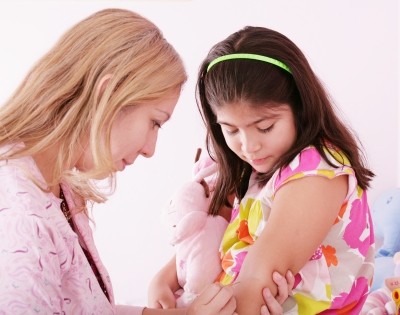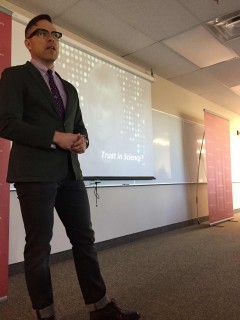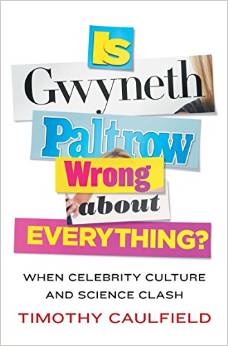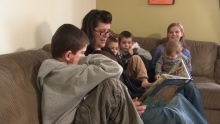 By Suzanne Waldman, School of Journalism and Communication, Carleton University
By Suzanne Waldman, School of Journalism and Communication, Carleton University
How do we make decisions about which risks to take, and which to not take? Do we look at evidence about the likeliness of harm, or do we go with our gut feel? Do we trust science, or follow celebrity advice?
Why some people choose the risk of diseases for their children over the far lower risks of vaccination against those diseases, and how communication can help people make these decisions, was the subject of a recent workshop held at Carleton University. It was the first such workshop by the Faculty of Public Affairs Professional Institute in Health Risk Communication. Workshop leaders were Josh Greenberg, Director of the School of Journalism and Communication, and John Rainford, Director of The Warning Project, a non-profit organization specializing in risk and crisis communication.
While vaccination rates for serious childhood diseases remain relatively strong, some vaccine preventable diseases (e.g. measles, mumps, pertussis) are resurfacing due to rising rates of vaccine hesitancy. Opting out of vaccines or delaying vaccination schedules, once almost exclusively in pockets of religious communities, has become trendy in other communities. As measles outbreaks across Canada during 2013-2014 and the more recent outbreak that centered around Disneyland in the U.S. have shown, small reductions in vaccination rates can lead to the loss of “herd immunity,” imperilling vulnerable groups and individuals.

Timothy Caulfield
Yet as the workshop’s title “Vaccine Hesitancy: Combating a ‘Wicked’ Risk Communication Problem” indicated, there are no easy answers for the question of how to influence people’s risk decisions around topics like vaccination. Timothy Caulfield, Canada Research Chair in Health Law and Policy and a Professor in the Faculty of Law and the School of Public Health at the University of Alberta, delivered the workshop’s keynote address. Caulfield reminded the participants that vaccination has become a victim of its own success, as parents who expose their children to the risk of childhood diseases due to their concerns about vaccination have rarely had to witness the ravages those diseases can wreak. Parents may also be unaware of the differences in scale between the risks of vaccinating and not vaccinating. For example, while the risk of a severe adverse event from a Measles-Mumps-Rubella vaccination is extremely low (1 in 1,000,000), contracting measles presents relatively high risks of complications such as pneumonia (1 in 20), encephalitis (1 in 1000) and other infections that can lead to long-term disability and death (<cdc.gov/measles/>.
Yet statistics on how the risks of contracting diseases are far higher than the risks of vaccinating rarely changes minds on their own, as Caulfield pointed out. He referred to the well-known failure of the “information deficit model” of risk communication: the idea that people will change their minds or behaviour if they are simply supplied with solid, expert information.
 In part the problem is that there is so much information out there, people don’t know which information to trust. Caulfield’s new book “Is Gwyneth Paltrow Wrong About Everything?: When Celebrity Culture and Science Clash” explores how the culture of new media has amplified a situation in which we may be as willing to trust non-expert celebrities as medical experts. As Caulfield pointed out, it is relatively easy for a celebrity to prey on the public’s fears about vaccination with a completely unverified anecdote about a side effect. One of the workshop participants, Robert Pless, Medical Advisor in vaccine safety with the Public Health Agency of Canada, pointed out that while scientists attempting to be rigorously accurate can appear to waffle, those advancing pseudoscience have no trouble speaking with passion and absolute conviction that makes them more convincing even when they are wrong.
In part the problem is that there is so much information out there, people don’t know which information to trust. Caulfield’s new book “Is Gwyneth Paltrow Wrong About Everything?: When Celebrity Culture and Science Clash” explores how the culture of new media has amplified a situation in which we may be as willing to trust non-expert celebrities as medical experts. As Caulfield pointed out, it is relatively easy for a celebrity to prey on the public’s fears about vaccination with a completely unverified anecdote about a side effect. One of the workshop participants, Robert Pless, Medical Advisor in vaccine safety with the Public Health Agency of Canada, pointed out that while scientists attempting to be rigorously accurate can appear to waffle, those advancing pseudoscience have no trouble speaking with passion and absolute conviction that makes them more convincing even when they are wrong.
Caulfield also proposed the way the media amplifies scientific studies with sensational but indeterminate results that may later prove definitive make science seem unduly conflict-ridden and rife with uncertainty. For example, the Lancet’s publication of Andrew Wakefield’s small and ultimately fraudulent study connecting the measles vaccination virus with autism in 1998 received massive media coverage, leading to sustained decreases in immunization rates and the return of measles disease. As Caulfield explained, the Wakefield study led to an “availability cascade” where the connection between vaccination and autism was reinforced in people’s minds as they heard about it over and over again. That the study was subsequently shown to be fraudulent and retracted by the Lancet could not undo the damage of the original publication. Caulfield also pointed to the need for the scientific community to improve its own structures of accountability to reinforce public trust in expert positions on crucial matters such as disease control.
 Following Caulfield’s keynote presentation, the question of the how to communicate the contrasting risks of vaccine preventable diseases and vaccinations was the topic of ongoing discussion at the conference. Risk communication strategies such as: 1) incorporating graphics that display evidence more clearly; 2) using plain language and narratives to complement evidence; 3) expressing empathy towards people with concerns about vaccination; and 4) acknowledging rather than dismissing the small risks of vaccination, were all proposed as part of best practices. As Michelle Driedger, Canada Research Chair in Environment and Health Risk Communication and Professor at the University of Manitoba’s Department of Community Health Sciences put it, communication about vaccination can be seen as “a cake where the facts are only some of the ingredients.” Josh Greenberg noted the need for communicators to move beyond cerebral arguments about probabilities, and to speak in an emotionally compelling way that engages people’s feelings about risk. As well, because vaccine hesitancy is a “wicked problem” with numerous causes and difficult to solve, there is no one-sized-fits-all solution. A variety of communication strategies are needed for different communities and different circumstances.
Following Caulfield’s keynote presentation, the question of the how to communicate the contrasting risks of vaccine preventable diseases and vaccinations was the topic of ongoing discussion at the conference. Risk communication strategies such as: 1) incorporating graphics that display evidence more clearly; 2) using plain language and narratives to complement evidence; 3) expressing empathy towards people with concerns about vaccination; and 4) acknowledging rather than dismissing the small risks of vaccination, were all proposed as part of best practices. As Michelle Driedger, Canada Research Chair in Environment and Health Risk Communication and Professor at the University of Manitoba’s Department of Community Health Sciences put it, communication about vaccination can be seen as “a cake where the facts are only some of the ingredients.” Josh Greenberg noted the need for communicators to move beyond cerebral arguments about probabilities, and to speak in an emotionally compelling way that engages people’s feelings about risk. As well, because vaccine hesitancy is a “wicked problem” with numerous causes and difficult to solve, there is no one-sized-fits-all solution. A variety of communication strategies are needed for different communities and different circumstances.
Consistency in risk messaging about vaccination is nevertheless required. Driedger, who has researched risk communication in general populations and in Metis communities, especially around the pandemic H1N1 influenza vaccination campaign in 2009-2010, proposed that consistent and yet subtly diverse types of messaging needs to come from three levels: 1) a centralized national clearing house like the Public Health Agency of Canada; 2) local public health bodies in touch with the specific character and needs of their communities, and 3) individual medical practitioners.
By the end of the workshop, the group determined that resources were most needed at the third level, to help physicians and other front line medical professionals learn to communicate about vaccines to their patients according to guidelines developed collaboratively between the Provinces and Territories and the Federal level. Several of the speakers presented research showing a large majority of people turn to their doctors before other sources for guidance about vaccines. Providing professional development opportunities where doctors can learn effective vaccine communication strategies was judged by the group to be the best route to raising vaccination rates. Allison Fisher, another workshop presenter, from the US Centres for Disease Control and Prevention proposed that teaching simple communicative moves to doctors such as opening up conversations about vaccination during a mother’s pregnancy, framing the idea of vaccination positively, and inquiring into the basis for concerns, can go a long way towards getting vaccine-hesitant patients on board.
A hopeful note was struck by Shelley Deeks, Medical Director of Immunization and

Tara Hills spoke out in favour of vaccines after her family was quarantined with whooping cough. Photo CBC.
Vaccine Preventable Diseases at Public Health Ontario. Deeks has detected a change in public attitudes around vaccination, where people are growing more aware of the risks of non-vaccination and more skeptical of anti-vaccination arguments. She pointed to a recent blog post that circulated widely on Facebook by an Ottawa woman whose who came to regret her decision not to vaccinate her seven children according to the recommended schedule when they all developed pertussis, even after she had already changed her mind about vaccination and had initiated a catch-up schedule for them. As she wrote on her blog, “my family is living the consequences of misinformation and fear.” (http://thescientificparent.org/learning-the-hard-way-my-journey-from-antivaxx-to-science/)
Finally, the workshop explored the question of whether a “hard line” should be taken in how public health professionals communicate the risk of non-vaccination. A growing sense that not vaccinating ones child/children against serious diseases is irresponsible because it raises the risks to one’s own children as well as others emerged as a position on which most participants agreed. Yet whether framing vaccination as a social responsibility will prevail as a viable communication strategy was something none of us at the workshop could foresee with certainty.
Graph image courtesy of renjith krishnan at FreeDigitalPhotos.net
Follow us on Twitter!